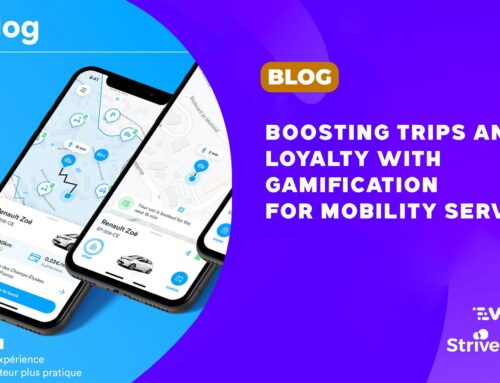What makes Robinhood and Revolut remarkable? The truth about investment app success.
The investment banking landscape has changed a lot over the years. With new financial regulations and more market democratization, industry disruptors are on the rise. As digital adoption keeps increasing, so does mobile app engagement. Challenger brands like Robinhood and Revolut make use of this by operating online only.
And they do so with great success. In the last four years, investment-based apps have grown downloads by 126%. One of those apps is Robinhood, whose mobile app engagement is higher than the top legacy providers combined.
So how do these apps compete against established financial corporations like Charles Schwab?
Take a look, here’s what we’ll cover:
How do investment apps distinguish themselves?
There are lots of things that got to do with the success of challenger banks. However, using technology as leverage seems to be the general thread here. A lot of the new age investment banks operate online only. These often referred to as Neobanks or challenger banks.
This allows them to keep operational costs much lower while providing a better customer experience. Customers often find online investment apps more accessible, and easier to get into. Apps like Revolut, Stash, and many more all confirm that a large percentage of their users are completely new to investing.
“Before fintech platforms like Stash, financial services, particularly the stock market, felt intimidating and inaccessible to so many Americans.” – Sudev Balakrishnan, Chief Product Officer@Stash
A potential reason for this could be the promised returns and low-cost barrier to getting started. In Australia for instance, the second-largest bank offers an interest rate of only 0.05%. In contrast, Australian neobank Xinja offers a 2.25% interest rate. That’s a 45 times higher return!
Another common trend among challengers is fee-free trading. “High minimums and fees kept hundreds of people on the sidelines for years,” says Balakrishnan. Stash is very focused on ease-of-use which has brought them over 2 billion dollars in assets under management.
“The competitive landscape is definitely heating up and ultimately this is great for the customer and only serves to validate what we have put effort into building. Zero commission trading will soon become table stakes and investment apps will have to up their game to differentiate in other ways. – Andre Mohammed co-founder@Freetrade and head of wealth and trading@Revolut
Competing for app engagement
There aren’t any signs of the disruption slowing down. Benjamin Belais, former country manager at Revolut shared his secret on gaining 1.5 million new users without spending any money on marketing: app engagement.
He stated the importance of daily interactions and getting your users hooked. This philosophy successfully shifted the focus from marketing to product. Two years later app engagement is through the roof with over 1 million daily active users and a grand total of 12 million users.
The same goes for Robinhood, which has recently been under fire for making their app too addictive. They accredit their high app engagement to the use of gamification. At the core of Robinhood’s app is a fun, game-like experience that helps you learn how to invest without charging any trade fees.
But what is gamification, and how can it help your investment app grow?
Gamification for apps – Your app engagement booster
What is gamification for apps?
Gamification is the use of game mechanisms in a non-game context. In other words, they take the psychology and triggers that make games fun and engaging and inject them into a digital experience. The result? A better experience that differentiates you from competitors and keeps your users hooked!
How does gamification for apps work?
True engagement stems from the inherent motivation to do something. That’s why a gamification strategy relies on the user’s desires and emotional states to trigger behaviors that support your business goals. Once a user carries out the desired action you can reward them to reinforce their emotional state and increase the likeliness of them coming back to your app.
Want to learn more about gamification? Here’s our “What is Gamification” page to help you get started!
How can investment apps leverage gamification?
Gamification for apps can nudge user behaviors to be more active. Robinhood for example immediately activates new users by giving them a free stock when signing up. Later on, personalized notifications and recommendations keep their users engaged. The possibilities of what you can do are endless.
How the disruptors of the investment industry use gamification to stay ahead
Robinhood’s rise to the top
What sets Robinhood apart besides their fee-free trading model, is their beginner-friendly experience. In contrast to other investment apps, you can almost instantly open an account without any previous knowledge of investing. They even give you a free stock to get started.
Additionally, they use a range of game elements to encourage user participation and app engagement. For instance, when a user makes their first trade, confetti falls down the screen. The app also has a leaderboard with the most popular stocks on its platform.
Robinhood’s personalized notifications also boost activity on their platform. In the first three months of 2020, Robinhood users traded nine times more shares than its competitor E-Trade, and 40 times as many as Charles Schwab customers. They also bought and sold 88 times more risky options.
Lastly, Robinhood amplifies referrals by using a reward program that can get you and your friends’ free stocks. The stock you get is shown at random, which increases anticipation even further.
The focus on products has allowed Revolut to grow at a fast pace. They rely on the users’ motivation to have an easy and cost-efficient experience. Their investment platform is built to help users get more out of their savings.
Similar to Robinhood, setting up an account only takes 60 seconds and the Standard plan is completely free. This low commitment approach seemed to appeal to millennials and Generation Z, which is the hardest to reach the audience for traditional banks.
That’s why, back in 2017, Revolut organized a competition called Race among different universities where students could get a free premium account to compete in trading. A leaderboard of all schools was published on Revolut’s social media. Their gamified onboarding helped them to quickly boost app engagement and adoption in a cost-effective manner.
Another gamification principle Revolut uses well is instant feedback. After making a trade, you will receive a notification to confirm your transaction. Lastly, Revolut offers a personal dashboard that allows you to track progress and achievements.
A plug-in gamification tool for your investment app
StriveCloud has built a plug-in gamification tool to supercharge app engagement. You can link it with your web and mobile apps to gamify any digital touchpoint you want to. This way you can make your app just as engaging as some of the challenger banks, without having to spend lots of resources on a product studio, or your own development team.
The plug-in gamification tool takes user data and turns it into a gamified experience.
Here are some of the things you can do with it:
- Set personalized milestones to encourage user activation
- Create challenges and leaderboards to trigger a sense of competition between users
- Visualize progress with leaderboards and leveling systems to keep users engaged
- Reward active participation with points or badge reward systems to keep users hooked
- Set up in-app messages and quests to drive engagement and behaviors that help you grow
And the best part about it? Once you have a gamification strategy, it only takes a few clicks to set up new elements!
Want to learn more about our plug-in gamification tool? Check it out here!
Key takeaways
So, we can conclude the investment industry is only starting to reshape itself with new brands coming up. Investment apps like Robinhood and Stash allow users with little to no experience to invest online.
The rise in digital adoption and app engagement is what’s driving growth for these apps. However, their customer-first approach helps them stay on top.
Here’s what we learned from this article:
Leverage technology for innovation
These investment apps or neobanks can cut down significantly on operational costs due to being fully online. Their focus on technology allows them to create better experiences, and automate services which usually take more manpower.
The future of investment banking is fee-free
Robinhood was one of the first apps to come up with this policy, which led the company to quickly rise to the top. In today’s world, it’s almost an industry standard. As traditional banks such as Charles Schwab are following the footsteps of their industry disruptors.
App engagement equals growth
Two of the largest investment apps in the world: Robinhood, the American market leader, and Revolut, the European market leader both state app engagement as their main driver for growth. The data for these companies tells the same story, as higher engagement also indicated higher revenue.
Gamification drives app engagement
Both Revolut and Robinhood use gamification to boost app engagement. This way they can nudge user behaviors to grow their userbase and to increase user engagement on their app.


